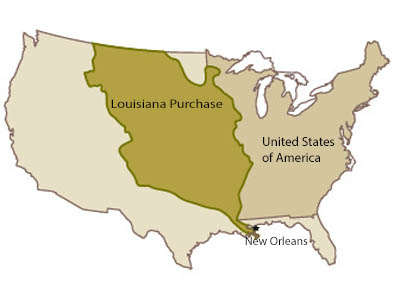White Cloud - Heroic Adventure
or Trendy Period Name?
 Chief Wabanquot AKA Chief White Cloud
Chief Wabanquot AKA Chief White Cloud
The City of White Cloud Michigan, born a logging camp in 1871, is now the present-day county seat for Newaygo County. Originally called Morgan's Station in 1873, it was also known as Morgantown and Morganville until 1877 when the name was changed to "White Cloud" to avoid confusion with another similarly named post office. This article seeks to answer the question "Why did Morgan's Station choose the name White Cloud?" An article at the White Cloud Chamber of Commerce website offers the following romantic story of the new name's origin.
"Tradition has it that Colonel Morgan (for which the town was originally named) had a beautiful daughter, Minnie, who was kidnaped by outlaws. After a harrowing chase, the outlaw band was trapped by Chief White Cloud and his Indian band and Minnie was rescued and returned to her father. In gratitude, Colonel Morgan renamed the thriving lumber town White Cloud."
These stories have never been documented and the truth probably will never be known. However, historians say that at the time in which the name of Morgantown was changed, the state legislature was encouraging communities to be named after famous Indians."
Having researched this story in depth, I concluded that only the last statement holds the highest probability of truth, but I did find some interesting facts that could generally support the whole story. Documented sources provided information that shows some mistakes, but contains some circumstantial evidence that could reveal how this story evolved.
First of all, Morgan's station was named after a founding father as quoted in the White River History website, "presumably after the first postmaster J. L. Morgan". However, in actuality, White Cloud, "was founded by Sextus N. Wilcox and Lester C. Morgan who built a lumber camp here in Everett Township in 1871 . . . and a post office of the same name on July 22, 1873, with Mr. Morgan as its postmaster" from "Michigan Place Names" by Walter Romig.
Lester C. Morgan had two sons and two daughters. The eldest (son), James L. Morgan, was a resident of Morgan Station, where he has been engaged in the lumber business since 1875 (he died in 1879). No information was found regarding the names of Lester Morgan's daughters.
It seems that Lester C. Morgan was never a Colonel however there was a Colonel Nathan E. Morgan who was a militia "first-sergeant of a battery of artillery organized in northern Michigan in 1863 (to 1882), for protection against the Indians". I didn't find information on any children he might have had. Perhaps Nathan Morgan, the closest law available at that time, was the actual Colonel of this story.
Was there a local tribe with a famous Chief named White Cloud that lived during that time? USA Cities Online has a little more information regarding Chief White Cloud, "The town was named after Chief White Cloud, whose headquarters were just near the northwest edge of Benton Lake, several townships away from his namesake village." The tribe in West Michigan at that time was the Chippewa, also known as the Ojibwe or Anishinabe. Although between 1837 and 1877, the Chippewa were being moved onto reservations in Michigan and west of the Great Lakes, they retained their hunting and fishing rights and frequented the tribal hunting and fishing grounds.
There were several famous Indian chiefs named White Cloud, but the most probable chief, based on tribe, region, period, and notoriety, was Chief Wa-bon-o-quot (White Cloud) (1828-1898) born at Gull Lake, Minnesota. After the Dakota War of 1862, Wabanquot was considered to be the principal chief of the removed bands of Chippewa. He was a signatory to the Treaty of Washington in 1867 and led his band to the White Earth Indian Reservation, where he lived until his death. He converted to Christianity sometime in the 1870s. Chief White Cloud was honored with an American Naval Fighting Ship named Wabanquot and the Chief White Cloud State Monument in Becker County, Calvary Catholic Cemetery, established in 1909. The monument inscription says: "Erected by the State of Minnesota appreciating a helpful, kindhearted, brainy man of true worth, born 1828 died Oct. 7, 1898."
The story could be considered highly probable if you consider that any band of the Chippewa was under the leadership of White Cloud and therefore his band. He may not have been present but was the chief nonetheless. It could be possible that the Chippewa did a good turn for Colonel Nathan Morgan by rescuing a captive pioneer girl, perhaps his daughter or one of Lester Morgan's daughters. Regardless of the truth of this romantic tale, the name change was probably in honor of this exceptional Chippewa chief.
Comment about this article on the
Epress Forum Board
.
|
|
Mississippi Bubble,
Like Deja Vous All Over Again
 Louisiana Purchase
Louisiana Purchase
These days you keep hearing about economic bubbles and bailouts and how our country is hopelessly in debt. Most recently we've had the housing bubble (2007-2010) and the tech bubble (1995-2000). The economy is a complicated system and hard for experts to explain to regular folks, but some basics are just common sense, and considering that this happened before it should be a lesson learned. We should all have remembered our history lesson when we covered the story of John Law and the Mississippi Bubble.
In the early 1700s, due to war debt and high taxation, France was in an economic depression and essentially insolvent as a nation. During that time France had a claim to the expansive Louisiana Colony territory that later become the Louisiana Purchase. This situation became an opportunity for a Scottish financier name John Law (1671-1729), a colorful character described as tall, handsome, vain, and with a passion for women and gambling.
Law came to France in 1714 to renew his acquaintance with the nephew of King Louis XIV, the Duke of Orleans. The Duke of Orleans became the Regent of France after the king died in 1715 and served as a ruler while young Louis XV was a minor. The duke knew of Law's financial skills and asked for his assistance in sorting out France's financial mess created by years of reckless spending under Louis XIV. Law came up with a plan that would create the Mississippi Company and its associated bubble.
In 1716 Law opened the "Bank Generale" that issued paper money in the form of banknotes supported by the bank's gold and silver. Paper money was new to the French whose money was traditionally gold and silver. Law thought that paper notes would increase money in circulation and more money would increase commerce and stimulate the economy. In theory, this increased commerce and economic stimulus would help the French government pay its debts
Law's Mississippi company had exclusive trading rights in the territory for twenty-five years; it had its own governor and made land grants to developers. In exchange, the company would transport 6,000 settlers and 3,000 slaves to the colony before its charter expired. Law would raise the money by selling shares in the company for cash and state bonds
In 1718 the company acquired the rights to tobacco trade with Africa. A year later the Bank Generale was taken over by the French government, but Law remained in charge. That same year he obtained control of trade with China and the East Indies. The company then gained the rights to mint coins and collect taxes for France. In 1720, Law became the Controller General and Superintendent General of Finance. Law controlled all of France's money, all of France's foreign trade, and colonial development. Law paid for all this by issuing additional shares in the company. These shares could be paid with his bank notes or with government debt.
The value of shares in the Mississippi Company shot up as Law's empire expanded. Investors from France and across Europe bought into his company. Shares in the Mississippi Company started at around 500 livres tournois per share in January 1719 and increased 190 percent by December. People became millionaires and even the working class began investing whatever they could.
The problem with Law's scheme was issuing more bank notes to fund purchases of shares in the company. Stock prices began falling as investors began selling shares for gold. To control the sell-off, Law stopped payments in gold. The bank then began to exchange its notes for shares in the company at the market price. This move resulted in a doubling of the money supply in France creating inflation that reached a monthly rate of 23 percent.
Law devalued shares in the company in 1720, and the value of banknotes was reduced to 50 percent. This triggered a selling frenzy that drove the share price down sharply. By the end of 1721, the bank notes were worthless and the Duke of Orleans exiled Law, who fled from France and died in poverty in 1729. French finances stayed weak helping to trigger the 1789 revolution.
Comment about this article on the
Epress Forum Board
.

|
|



